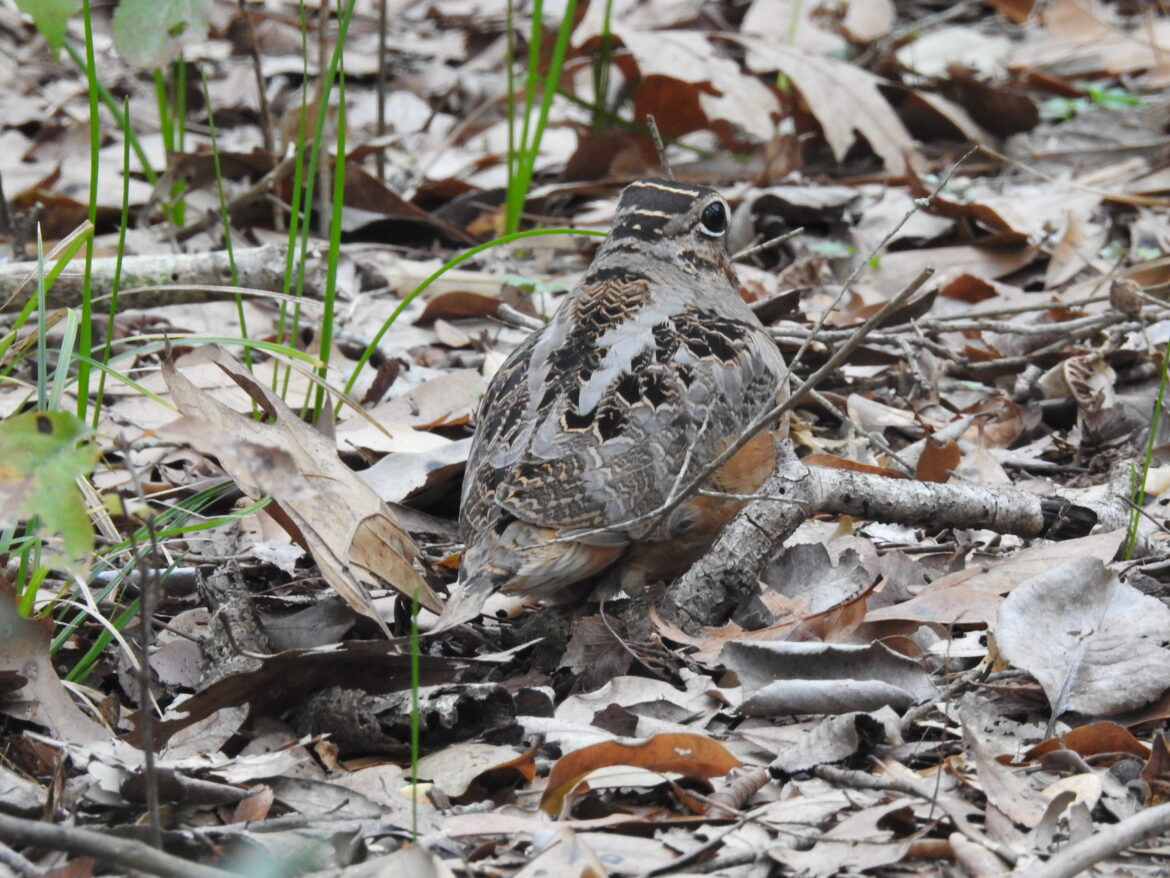By Susan A. Heath
In late December and through January, those of us in east Texas are treated to the display of the timberdoodle if we take the time to seek them out. Timberdoodle? That’s the colloquial name for the American Woodcock, a bird species that likes moist forests. Although they are taxonomically considered a shorebird, you’ll never find one near the shore!
They walk along the forest floor probing for earthworms with their specially designed bill which has a flexible tip. They sometimes rock their body back and forth stepping heavily with their front foot to get worms to move around in the soil, and if you ever see one out in the open you might see them walking this way. There are a lot of videos online showing this distinctive feature. Google it!
Their breeding range is the eastern U.S. and Canada as far south as central Florida, but in Texas they only breed in the far eastern part of the state. Their wintering range includes a larger area of Texas though and they can be found in winter along the coast almost to the Rio Grande River. They are fantastically camouflaged, making them hard to find unless you almost step on one when walking through the woods. They flush with a wing whir and are gone before your heart stops its frantic beating from the encounter.
Near the end of December, they start getting revved up for the breeding season and often you can see and hear them displaying at dusk until they depart for the breeding grounds in late January. The male gives a buzzy peent call over and over from the ground until he finally launches himself in an upward spiral that can reach 200-350 feet. As he rises, his wings make a twittering sound and then when he descends, he makes a chirping noise before silently landing on his display area and starting the whole process over again. It is a fantastic thing to see! By February they have all departed for the breeding grounds and the show is over until next year.
American Woodcocks are plump and short-legged with very long straight bills. They have large heads, short necks, and short tails giving them a bulbous look, kind of like a ball of feathers. Their wings are broad and rounded compared to other shorebirds which supports their breeding display but also flight through forests where long wings would be a disadvantage.
They are similar to the Wilson’s Snipe (yes, there is a bird called a snipe!) but woodcocks have crown stripes going back and forth across the head while snipes have crown stripes going from back to front. Snipes also hang out in wetlands and muddy spots in fields versus woods where you will find the woodcocks.
Woodcocks have another feature that might be considered useful for all you parents out there. Their eyes are positioned high and near the back of their skull giving them a view of 360-degrees in the horizontal plane and 180-degees in the vertical plane. Pretty nice feature when you want to keep an eye on aerial predators while you’re probing the ground with your bill.
Woodcocks have a couple of other interesting names including Labrador twister, night partridge, mudbat, and bog sucker. If you ever see one, you can yell out one of those names and I bet you’ll get some attention! But seriously – seek out the woodcock and see their fantastic display. It’s worth it!
Photo caption: American Woodcocks have eyes set high on their heads so that they can see 360 degrees around themselves. Photo by Sue Heath

